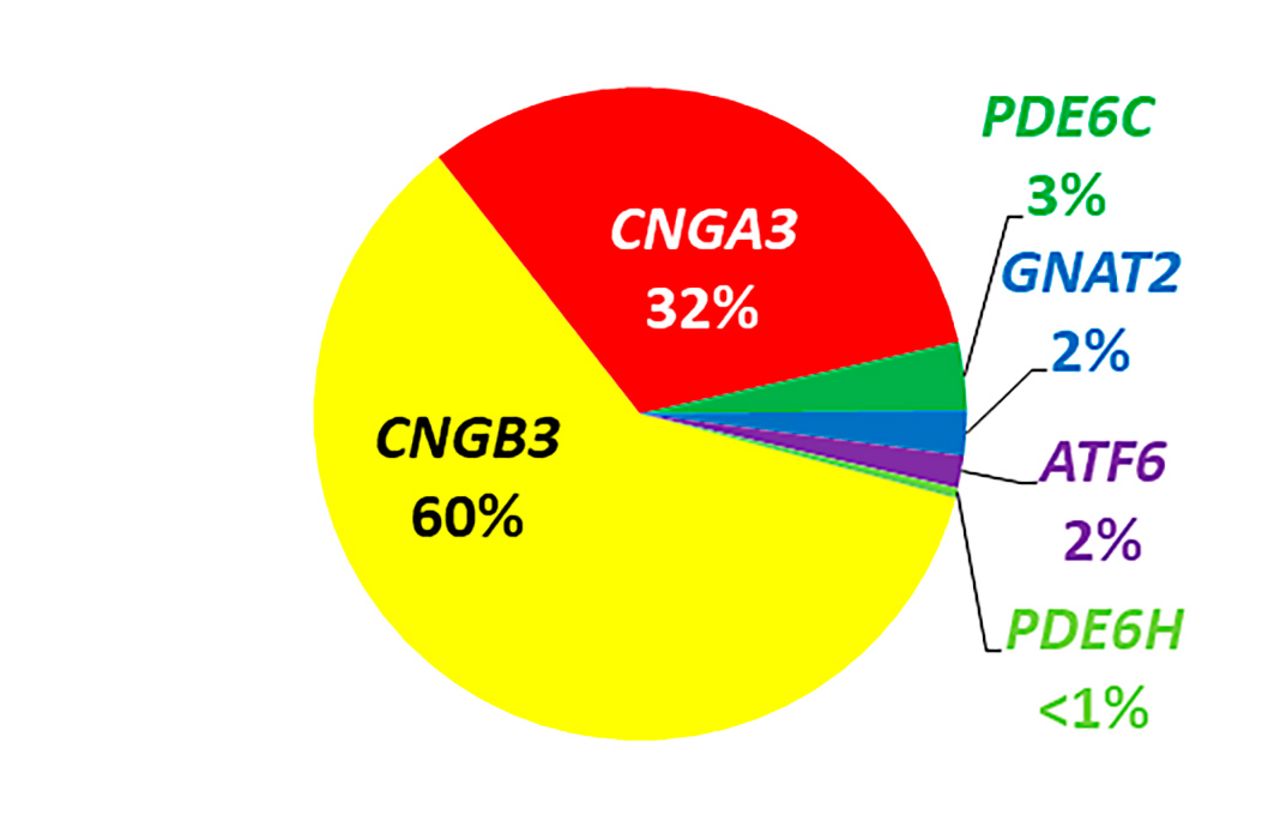Achromatopsia
Achromatopsia (ACHM) is a rare autosomal recessive cone disorder with an estimated prevalence of 1: 30,000 to 1 : 50,000. It typically manifests within the first weeks or months of life, and affected individuals suffer from nystagmus, photophobia, severely reduced visual acuity (<0.1 or 20/200) and color blindness. Rod-mediated vision remains largely unaffected in ACHM patients. Originally thought to be a stationary disease, the application of optical coherence tomography has demonstrated progressive foveal outer retinal degeneration at least in some patients.
Most patients suffer from complete Achromatopsia, with a total lack of function of all three types of cone photoreceptors. Rarely, patients have incomplete Achromatopsia, with symptoms similar to those of individuals with complete Achromatopsia, but generally less severe (i.e., residual color vision or cone responses on electroretinography, higher visual acuity, less photophobia, or no nystagmus).
Five genes, CNGA3, CNGB3, GNAT2, PDE6C, and PDE6H, all encoding functional components of the phototransduction cascade in cone photoreceptors, have been implicated in Achromatopsia. Recently, we have shown that also mutations in ATF6, encoding a key regulator of the unfolded protein response and cellular endoplasmic reticulum homeostasis, can cause Achromatopsia.
Our group studies the molecular genetic basis of Achromatopsia in individual patients and families as well as on the population level.
Main objectives of the project are:
- Provide research testing to patients with Achromatopsia
- Reference center for clinically diagnosed and genetically confirmed Achromatopsia patients
- Determination of mutation spectrum and mutation rates in Achromatopsia
Closely related to this project is the RD-Cure project - the first-in-man phase I/II clinical safety study applying gene augmentation for CNGA3-associated Achromatopsia (http://www.rd-cure.de/)




